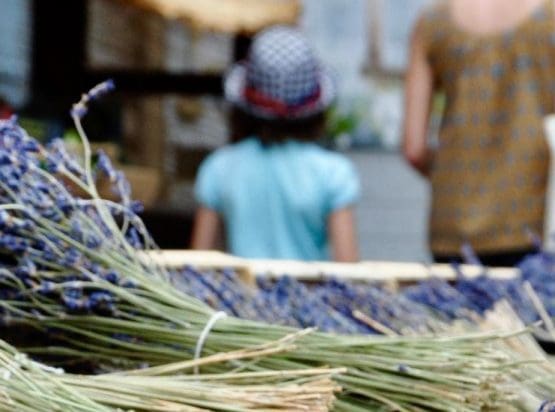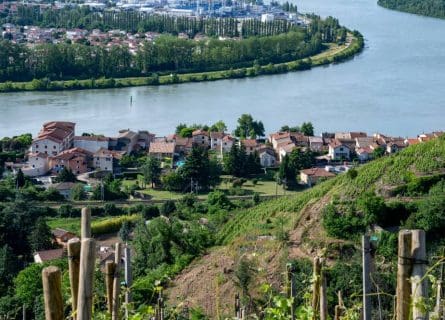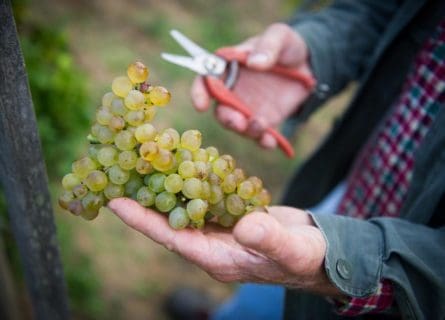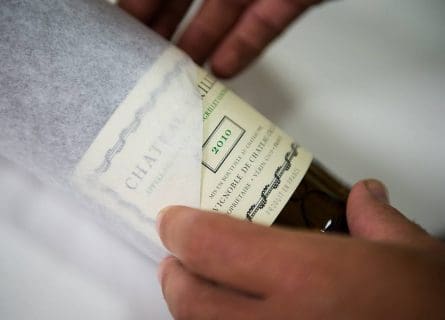Uncover Gigondas's vibrant flavors and culinary gems with our expert guides. Plan an unforgettable trip now!
Read more
EXPLORE ALL OUR RHôNE VALLEY WINE REGION GUIDES
Last updated: April 4, 2025
The Condrieu wine region is an outlier – a dissident in the Northern Rhône. While most vineyards in this part of the world are planted with red grape varieties, Condrieu refuses to swim with the tide. Instead, it stakes its entire reputation on a small volume of delicious white wines that are oily, richly textured, and imbued with the scent of freesia.
Admittedly, they lack both the renown and cachet of top Meursault and Puligny-Montrachet. But to the region’s proud growers, that scarcely matters; they consider Condrieu one of the finest white styles made in Europe today.
Indeed, the best Condrieu is undeniably exquisite: mineral-tinted, pure, and unbelievably complex. Unfortunately, French sommeliers often jealously guard the leading brands, ensuring they always stay within the country’s borders. Yet, as the area under vine continues to expand, finding Condrieu in the US and other markets is becoming less of a challenge. These inimitable wines, ignored for too long, are well worth discovering.
Discover More About French Wine
In ancient times, migrant tribes of Celtic, Gaulish, and Teutonic origin made their home in the beautiful Rhone Valley. Yet they could not stand against (despite numerous attempts) the might of Rome. After fierce battles, the Roman military founded the colony of Lugdunum (Lyon) in 43 BC, located 43 kilometers north of Condrieu.
For centuries, it served as the capital of the Roman territories known as the Three Gauls under Emperor Augustus. The emperor was an important advocate of the vine, encouraging the spread of viticulture across the steel hillsides of the Northern Rhone Valley. Meanwhile, the Roman administration forced complete cultural homogeneity in Gaul, maintaining a hegemonic grip over the lives of its citizens.
Fall of Rome and Frankish Dominion
This grandiose political project endured until 476 AD when Roman authority collapsed across Western Europe. Chaos then ensued as rival civilizations attempted to appropriate former Roman territories.
However, during the Dark Ages, the Frankish dynasty established a modern French state with distinctive dialects, culture, and traditions. Over the centuries, the Merovingian and Carolingian empires conquered lands outside of Gaul while protecting the frontier against incursions from the Moors; Arab and Berber mercenaries, led by the Muslim general Tariq, attempted to subjugate France in the 8th century, finally establishing a colony in Provence. From Fraxinetum, they carried out raids in the Rhone Valley, enslaving people to sell to their Arab trading partners. Many bloody battles occurred until they were banished from southern France in 972.
Yet there was more bloodshed to come. The 13th and 14th centuries saw the feudal houses of Savoy, the Dauphine, and Provence fiercely contest regions in southern France, including the Rhone and neighboring Alps. Thus, successive wars and occupations marked this period, with each side swooping in and reoccupying territories.
However, Condrieu did enjoy a moment of prosperity in the 1700s, as its white wines became massively popular in the restaurants and bistros of Paris. Shipped to the city of Saint-Etienne, merchants would use the eastern section of the Loire River to transport barrels to the outskirts of France’s handsome capital. Meanwhile 1860, the French state absorbed the House of Savoy and its domains.
Decline and Resurgence
In the 20th century, Condrieu was in the sweet wine business, producing rather sticky and unctuous styles that were admittedly perfect with Tarte Tatin! But as tastes changed and dessert wines became passe, Condrieu’s future looked precarious.
Moreover, the difficulties inherent to producing an economically viable crop from such a mercurial and low-yielding variety ensured that much of the acreage was grubbed up in the mid-20th century. By the 1960s, there were scarcely 12 hectares under vine. For a time, it looked like Condrieu would disappear forever.
Condrieu’s Wine Renaissance
Thankfully, the small number of remaining acolytes spread the word, helping an international fan club develop around the style. Today, over 170 hectares are under vine, and growers are looking to new sites (both within and outside the appellation) to expand production.
Indeed, several brands are marketing their wines as IGP Collines Rhodaniennes, as their vineyards are located outside the zone’s boundaries. Today, Condrieu is in the ascendant.

Condrieu is located in one of the most beautiful parts of the Rhône Valley. Situated in southeastern France, this 250-mile-long body of water flows from the Swiss border to the azure blue expanse of the Mediterranean. To find Condrieu, head south from the village of Ampuis, and you’ll soon arrive at the heartland of the appellation, created in 1940.
To the north are the Syrah vineyards of Côte Rôtie – the pretty town of Chavanay lies to the south. Cultivated on south-east-facing slopes towering above the village, the dramatically steep Viognier vineyards require hand harvesting as a matter of course. The appellation’s boundaries, stretching for just nine miles, are strictly demarcated.
Only vineyards located in the communes of Condrieu, Chavanay, Limony, Malleval, Saint-Michel-sur-Rhône, Saint-Pierre-de-Bœuf, and Verin are entitled to fly the appellation banner. The climate is continental, with warm summers and cold winters.
Viticultural Practices
In addition, the south-facing aspect exposes the vines to prolonged amounts of sun in the warmer months, helping the late-ripening Viognier grape achieve good phenolic maturity levels. The soils are a mixture of mica and crumbled, sanded granite, eroded over the centuries. People routinely say that the high concentration of granite is responsible for Condrieu’s trademark minerality and freshness.
Yet the best sites, as any winemaker will confirm, are vineyards planted on sheltered slopes, defined by their mica-rich topsoil called arzelle. Although Condrieu has no formalized vineyard classification, all agree that Chanson, Chery, Cote Bonnette, and Les Eyguets are the top-performing climats. Grapes from these single vineyards will always fetch an inflated price.

Unlike Cote-Rotie and Hermitage, Condrieu does not subscribe to blending different grape varieties. Only 100% Viognier grapes, grown on prized terroir, are allowed by the regulations. At its best, it combines a voluptuous texture with the most hauntingly beautiful bouquet, characterized by apricots, passion fruit, and garrigue. The wines come into their own when paired with Provencal cuisine – particularly bouillabaisse and Salade Niçoise.
In general terms, Viognier tends to show well very young, benefiting little from extended bottle age. But there are exceptions, as we’ll see, to every rule.
Challenges in Condrieu
So, how is Condrieu made? Well, it depends on the producer in question; some wineries prioritize freshness overweight, fermenting their wines in stainless steel and avoiding the kiss of new oak. Young, ambitious growers have also been experimenting with late-picked, botrytized versions and skin-contact wines, producing a darkly colored, phenolic expression of the Viognier grape.
Andre Perret, Guigal, Georges Vernay, and Pierre Dumazet are among the top producers of classical, rich, and fragrant Condrieu, with Guigal being the most passionately committed to aging in barrique. Its winemaker prefers to vinify in a mixture of new barrels (one-third) and stainless steel tanks at low temperatures. Malolactic fermentation occurs before the wines are matured on 100% new French oak.
Guigal describes the results in bottle as “intensely flowery (violets), and fruity (apricot, peaches and citrus)”. The wine is said to have a “rich, unctuous, and full-bodied palate, with light acidity and round fleshy fruits.”
Terroir as the Cornerstone of Quality
But terroir is the true kingmaker in Condrieu. To put it mildly, Viognier is not an easy variety to manage – especially in cooler vintages. Unfortunately, the vines must be sheltered from the cooling Mistral winds that tend to pick up at the flowering time (June).
In addition, Viognier is prone to developing grapevine diseases, while older vines often produce a very meager – if concentrated – yield. The secret to producing superior wines is to harvest Viognier before its alcohol level becomes unwieldy, keeping that all-important acidity in the picture. As ever, balance is all.

The secret to enjoying Condrieu—as the cliché goes—is to drink this delectable nectar in the first flourishes of youth. However, most critics, from Jancis Robinson MW to Tom Stevenson, have suggested that it will not necessarily age well.
There is some truth to their observations: this full, fragrant, floral white of immense character can fade into oily mediocrity after a few years if the wine is based on young vines and/or made by inexperienced winemakers.
Château-Grillet: The Exception to the Rule
Yet some Condrieu can improve in bottle for at least a decade – or perhaps more. One of the most outstanding examples of the genre is made in a very special terroir known as Château-Grillet. Just 3.5 hectares of vines are cultivated in this single-producer appellation, making it one of France’s smallest.
Purchased by Artémis Domaines in 2011 (the company that owns Château Latour), the quality at Grillet has soared in recent years. Many would say the winemaking has finally caught up with the superior terroir. Others would argue that the wines have always delivered endless pleasure due to the privileged position of the site.
Unique Terroir and Winemaking Excellence
It is undoubtedly true that Château-Grillet is blessed with exceptional raw materials. A majestic amphitheater of vines surrounds the property, sheltered from the Mistral winds yet perfectly aligned to receive the maximum sunlight. The soils are a potent mix of clay, decomposed granite, and mica.
The resulting wine, aged in oak for at least 16 months, is utterly beguiling. It is intensely aromatic and usually very complex and long, with notes of stone and tropical fruit on the palate, balanced by textbook acidity.
If you covet texture, opulence, and ripe fruit, Château-Grillet always delivers the goods. But there is no rush to drink Château-Grillet if you covet tertiary complexity over the instant gratification of ripe fruit. For that reason, it remains the sole ‘Grand Cru’ of this venerable appellation.
Viognier comes from the northern Rhône valley AOC of Condrieu and is where its most famous white wines are produced.
Find out moreFoodies eat your heart out: Lyon’s proximity to the Northern Rhone ensures that dining out is the highlight of any visit to Condrieu. In less than one hour, you’ll be in the gastronomic capital of France, Lyon (sorry, Paris!), with endless delicacies to savor.
Local highlights include saucisson aux pommes (sausage with potatoes), quenelle (a poached dumpling made out of freshwater fish), and boudin noir, a very pungent type of blood sausage. But save room for dessert, especially if it is a freshly made tarte aux pommes.
A Gastronomic Guide to the Cusine the Rhone Valley: Read more
If you would like us to customize an exclusive luxury tour, contact us and let us know your travel plans. We offer luxury food and wine tours for private groups of a minimum two guests. In addition, all of our private, chauffeured tours are available year-round upon request.

